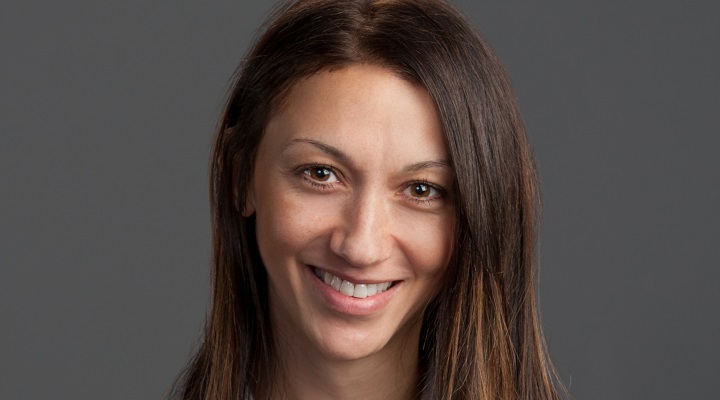There’s no question that women remain underrepresented in leadership roles and still earn less than men across many industries, including retail. For this to change, organisations must make a deliberate effort to support women and ensure they have equal access to opportunities and remuneration. We spoke with Jacqui Marker, Amazon’s HR operations director in Australia, Singapore, China and MENA, about how the online retailer is working to create a more gender-equal workplace and her adv
advice for other businesses. Here are the key takeaways.
Implement woman-specific hiring strategies
“Having women-specific programs and hiring strategies to attract, foster and retain great talent is critical because so much stems from female representation. It’s important not to undervalue the impact of having women in leadership teams. Not only are they advocates and mentors, but they share their career progression, their successes, their failures, and they really showcase how women can navigate a pathway for a successful career,” Marker told Inside Retail.
“Today at Amazon, we have a large proportion of senior roles being led by women. We’re a group of strong women. We’re not afraid to disrupt the status quo, or fiercely advocate for females. We take our role seriously when it comes to leading from the front and role modelling gender equality.”
Stamp out unconscious bias
“Creating equal opportunity begins in the hiring process. We have gender-neutral language in our job advertisements, we have equal representation on all of our interview loops, and our interview process itself is designed to be bias-free. It’s driven by data and an individual’s accomplishments, rather than gender or personality type,” Marker said.
“We all have biases, whether they’re conscious or unconscious. We do a whole heap of gender and diversity training. One of our leadership principles is “have backbone”, and we’re not afraid to call it out when we see any biases, and in fact, we nominate bias disruptors in all of our talent meetings.
“Our organisation as a whole is very cognizant of inclusion and unconscious biases and we make intentional efforts to increase underrepresented groups to achieve diversity and eliminate biases.”
Be deliberately inclusive
“We have always actively recruited people from diverse backgrounds to build a supportive and inclusive workplace. We have built-in algorithms that statistically help us identify significant demographic outcomes throughout some of our processes, such as talent review. It’s an amazing tool that drives not only equity but talent identification and promotion of women,” she said.
“The whole piece is really innate in our DNA. We’ve always considered how important it is to have diverse perspectives and to ensure that we are promoting and including different voices and insights because we are always working back from our customers, and we know our customers are a diverse representation of humans.”
Invest in mentoring
“We have a range of mentoring opportunities that include company-sponsored mentoring and our affinity groups. From my perspective, the most critical component of building this framework is having a safe space for women. A safe space for women is a place where they can connect and relate to each other without fear of being judged. It’s a place where they have an opportunity to develop close relationships with senior female leaders who have likely walked a similar path in their own shoes. It’s a place where they can lean in for support when they’re faced with uncertainty, fear, imposter syndrome or setbacks,” Marker said.
“Speaking from personal experience, I have a female VP based in the US who is my mentor. I feel safe to confide in her and vent, and I use her a lot as a sparring partner to help me with my problem-solving and thinking. Having a mentor has made a huge difference to my own development, and in turn, I pay that back. I have four young females that I mentor across India, the US and Australia, and I couldn’t be prouder of the investment that Amazon makes in mentoring. It provides countless benefits in terms of job satisfaction and opportunities for career advancement.
“We also have women affinity groups across all layers in our organisation. Our affinity groups are an employee support network – they host events, generate ideas and introduce meaningful discussions and conversations. Other affinity groups include Glamazon, which is for LGBTQIA+ people, we have an Indigenous affinity group, we have Warriors, which is for our veterans. We use these groups to foster diversity and inclusion.”
Close the pay gap
“There are several strategies and steps that businesses can take to close the gender pay gap, but an essential reminder is to treat it like any other business problem. Pay is only one element of a wider strategy to address gender equity but certainly pay equality is the first step. Businesses and leaders need to be intentional in their strategies and aware of the data and situation. Conduct a pay gap analysis, review the data, and tailor a strategy and action plan,” she said.”
“Other steps include normalising flexible working arrangements to support parents and their childcare responsibilities, as well as their return to work after birth or adoption. Execute inclusive hiring practices to eliminate the potential for bias, unconscious or otherwise. Establish a culture of gender equity from the top down by attracting and retaining female talent at all levels. And create a space where women feel free to speak and voice their point of view and concerns.
“One thing that individuals can do today is undertake gender and diversity training to understand how identities shape how people behave and become aware of where they may be blind to their own bias.”

